How to save images and videos with an industrial camera & Galaxy SDK
Our free Galaxy SDK for industrial cameras includes a basic plugin that allows you to easily save captured images to your hard drive or save them as videos. This article provides an overview of the settings available and our recommended configurations for capturing and saving images and videos using our industrial camera system.
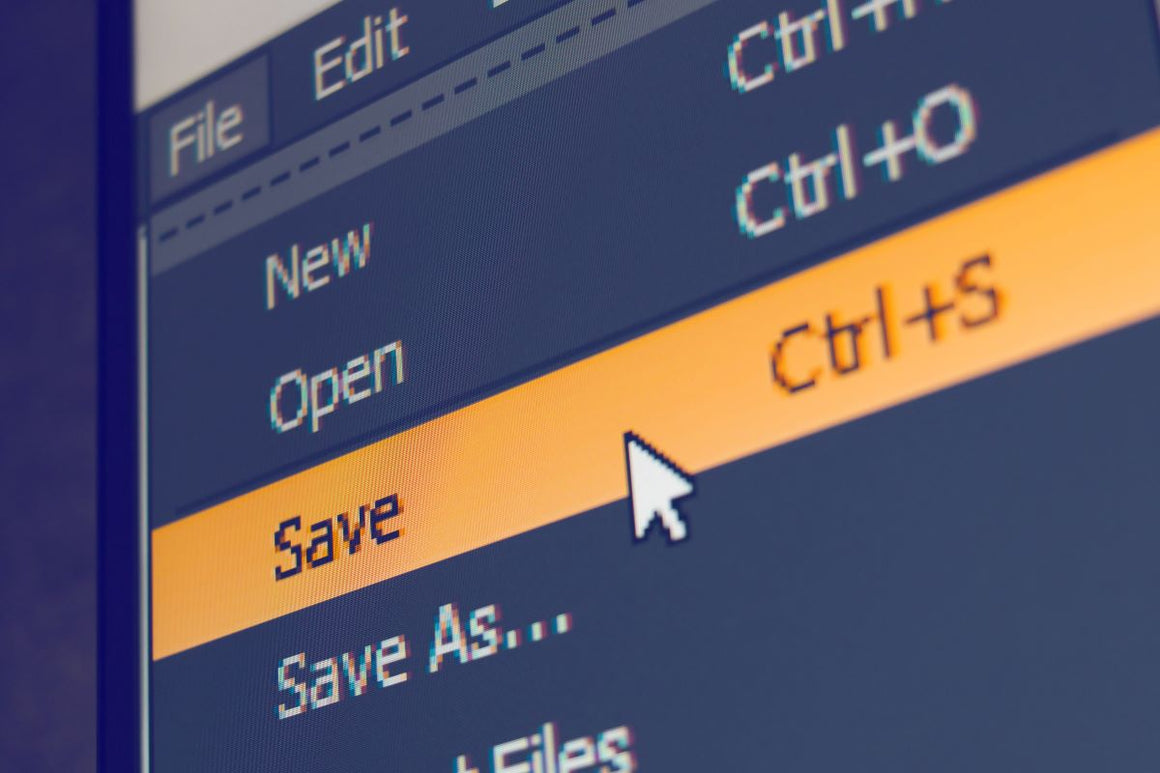
Table of contents
Videos and Images Save Plugin
To save images and videos using the Galaxy SDK, follow these steps:
- Install the Galaxy SDK
Download the necessary drivers and manuals from our website.
- Launch the Daheng Galaxy Viewer
Open the program Daheng Galaxy Viewer (x64) on your computer.
- Access the Plugin
Navigate to Plugin > Videos and Images Save Plugin in the menu, as shown in the screenshot below.
Using this plugin, you can save captured images in various formats or even store them as video files for easy access and processing.

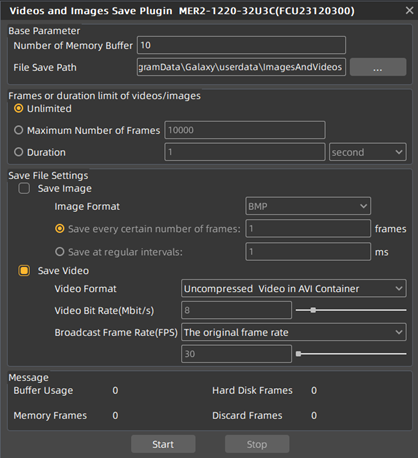
Base Parameters
The following parameters can be configured within the Videos and Images Save Plugin:
- Number of Memory: This parameter determines how many images are buffered into memory before being saved. We recommend setting this value to 10.
- File Save Path: This specifies the location where the captured images or videos will be stored on your system. You can choose the desired directory for saving the files.

Limit the Number of Frames or Duration Recording / Saving
The Videos and Images Save Plugin offers the option to limit the number of frames captured or the duration of the recording. You can configure the following settings:
- Unlimited: No limit on the number of frames or recording time. The plugin will continue capturing until the storage is full, at which point it will stop automatically when there is no more available space.
- Maximum Number of Frames: Set a specific number of frames at which the image capturing will stop once reached.
- Duration: Choose the total duration for which the plugin will run, which can be defined in seconds, minutes, or hours.

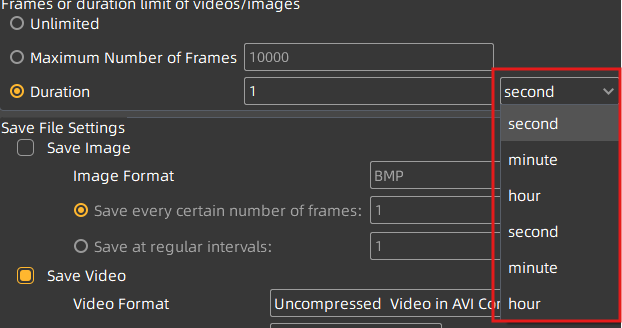
Save File Settings for the Videos and Images Save Plugin
In this section, you can choose whether to save images or videos captured by the industrial camera.
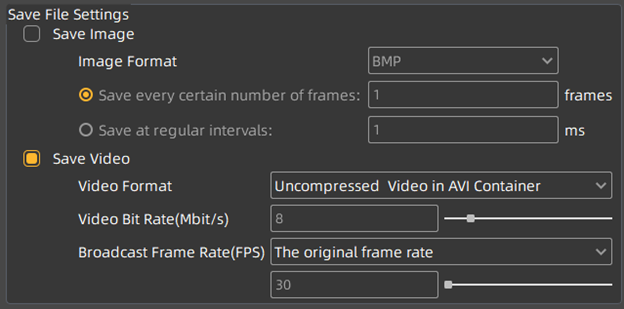
Save Image Option
To enable image saving, tick the Save Image box. Depending on the frame rate and desired image quality, different file formats are recommended. In our test setup, we use a 1.6MP Mono camera paired with a laptop featuring an Intel i5 (10th generation) processor, 8GB RAM, and an SSD (2020 model). Below are the recommended image formats and their performance based on this setup:
- BMP (Max Frame Rate: 200fps; File Size: 1.6MB (uncompressed); Ideal for high-speed image capture. However, it fills the hard drive quickly due to the large file sizes).
- PNG (Max Frame Rate: 5fps; File Size: 0.7MB (lossless compression); Lossless compression results in larger CPU usage but preserves image quality, making it ideal for image processing later. Recommended if 5fps is acceptable).
- JPG (Max Frame Rate: 30fps; File Size: <0.1MB (compressed); While it offers a high frame rate, JPG compression leads to irreversible loss in image quality, making it unsuitable for future image processing)
- RAW (Max Frame Rate: 100fps; File Size: 1.6MB (uncompressed); Not recommended. RAW files can only be opened with Halcon software. For monochrome images, RAW files are essentially the same as BMP but stored in a different format. For color images, it lacks debayering, making it less useful).
The following options allow you to specify how many images you want to keep every X frame or X time.

For example:
1 image every 1 frame: Saves every captured image.
1 image every 10 frames: Saves 1 image out of every 10 captured.
The plugin operates in software trigger mode, so you can manually capture images based on your set parameters.
Framerate Considerations
If the camera is set to free run, the plugin will work reliably only if the frame rate is fixed. Automatic exposure, white balance, and gain settings can affect the exposure time, which in turn may influence the frame rate. As a result, the image save plugin may stop capturing images.
To prevent this issue, we recommend:
• Limiting the framerate of the camera.
• Disabling or adjusting automatic exposure, gain, and white balance settings.
Save Video Option
The Videos and Images Save Plugin in the Galaxy SDK allows you to save captured images as video files. Using the basic video-saving functionality, you can choose from different file formats depending on your needs.

Supported Video Formats & Maximum Frame Rates
Using a 1.6MP mono camera and a laptop with an Intel i5 (10th gen), 8GB RAM, and SSD (2020 model), the following maximum frame rates can be achieved without frame drops:
- H.264 Video (AVI Container) – max 90fps
- H.264 Video (MP4 Container) – max 90fps
- Uncompressed Video (AVI Container) – max 120fps
File Size Considerations
Recording a 1-minute video at 60fps using a 1.6MP mono camera results in the following file sizes:
- H.264 Video (AVI Container) – 67MB
- H.264 Video (MP4 Container) – 67MB
- Uncompressed Video (AVI Container) – 5490MB
Uncompressed video files are significantly large but provide the best image quality and fastest saving speed. If sufficient storage space is available, we recommend using uncompressed AVI. Otherwise, we suggest H.264 Video (AVI Container) with an 8 Mbit/s video bitrate for a balance between quality and file size.
Impact of Camera Resolution on Frame Rate
The maximum achievable frame rate depends on PC specifications, image resolution (megapixels), and frame rate settings.
For example, switching from a 1.6MP camera to a 6MP camera increases the data load by a factor of 6/1.6 = 3.75. This means the maximum frame rate will decrease accordingly:
- H.264 Video (90fps on 1.6MP) → 24fps on 6MP (90fps ÷ 3.75 = 24fps)
Broadcast Frame Rate Settings
The Broadcast Frame Rate setting determines how the video is saved and played back:
- Original Frame Rate (Recommended)
The saved video maintains the same frame rate as the captured images.
- Custom Frame Rate
Allows setting a lower playback frame rate.
Example: If images are captured at 90fps and a custom frame rate of 30fps is set, the video will play back 3x slower (90/30 = 3).
A 10-second recording at 90fps will be saved as a 30-second video at 30fps.
Messages
The Message field in the Videos and Images Save Plugin provides real-time feedback on whether your PC is capable of recording all images and videos without loss.
- Memory Frames: Displays the number of images currently stored in memory.
- Hard Disk Frames: Shows how many images have been successfully written to the hard drive.
If the Hard Disk Frames count is lower than the Memory Frames count, it means some images were lost because the system couldn’t save them fast enough. This indicates that your PC is struggling to keep up with the recording demands.
If images are not being saved correctly, consider the following adjustments:
✔ Reduce the frame rate to lessen processing load.
✔ Select a different file format (e.g., use H.264 instead of uncompressed AVI).
✔ Upgrade to a more powerful PC with a faster processor, SSD, or more RAM.

Example: Saving a 24-Hour Timelapse Using an Industrial Camera
This example demonstrates how to capture one image every hour over a 24-hour period using an industrial camera to create 24-hour timelapse. The plugin will be configured to run for 24 hours and automatically stop after saving a total of 24 images.
⚠ Note: If storage becomes full during the process, the plugin will stop acquiring images and will not overwrite older frames.
Recommended Settings:
- Reduce the Camera Frame Rate to 1 FPS to optimize performance.
- Set the Duration Limit to 24 hours to ensure automatic stop.
- Enable the "Save Image" Option to store captured frames.
Set the "Save one image out of every captured image" value to 3600.
Since 1 hour = 3600 seconds, this ensures that one image is saved every hour.
- Adjust the Image Capture Interval:
- Run the Plugin to start the 24-hour timelapse recording.

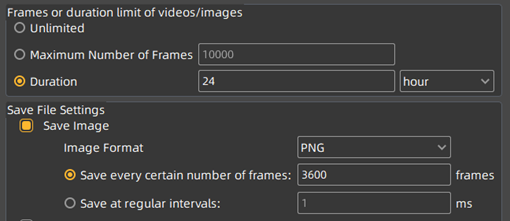
Recommendations for Saving Videos and Capturing Images with an IndustrialCamera
Our free GalaxyView software provides basic functionality for saving images. However, for more advanced features, we recommend developing a custom image-saving application using our example programs in Python or C++.
If you require advanced video-saving capabilities, consider the following options:
🔹 Kinovea (Free)
✔ Ideal for high-speed video recording over short periods.
✔ Suitable for low-speed recording over longer periods.
🔹2nd Look
✔ Designed for 24/7 video recording.
✔ Supports both high-speed and low-speed video recording.
















































